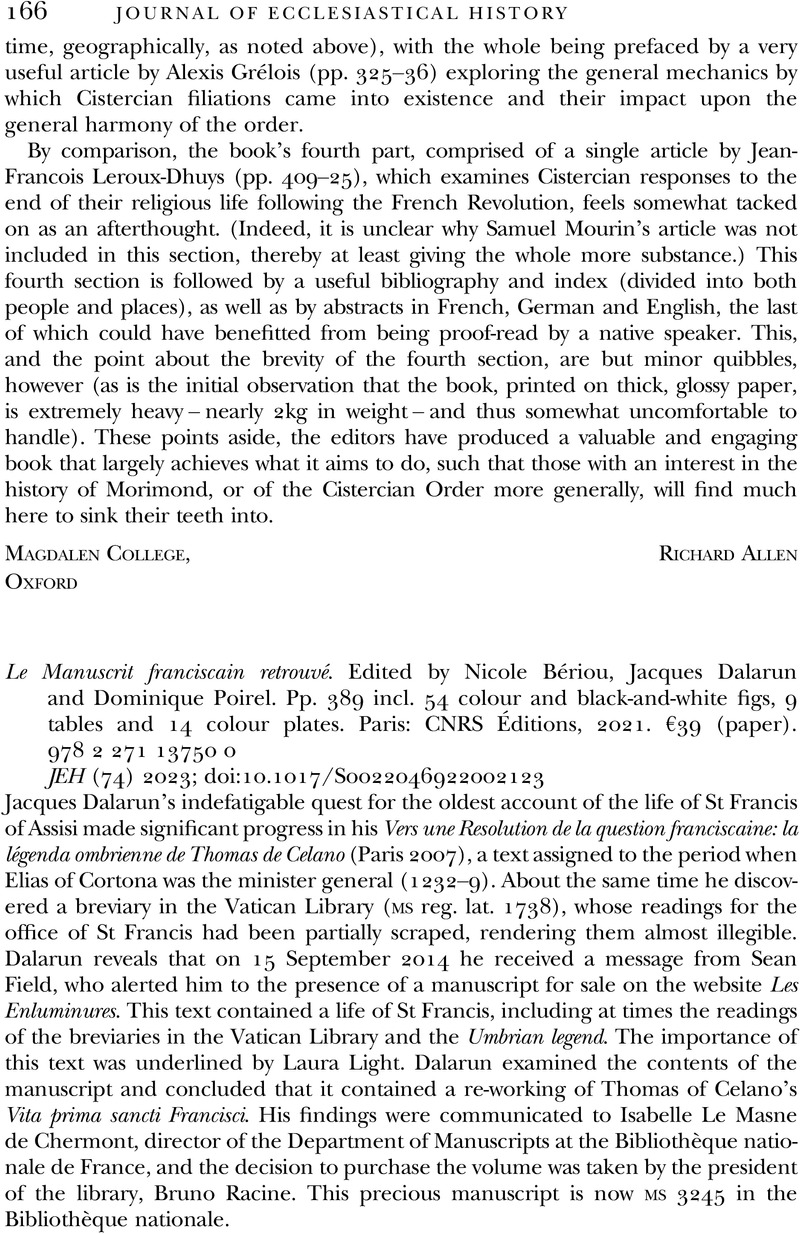No CrossRef data available.
Article contents
Le Manuscrit franciscain retrouvé. Edited by Nicole Bériou, Jacques Dalarun and Dominique Poirel. Pp. 389 incl. 54 colour and black-and-white figs, 9 tables and 14 colour plates. Paris: CNRS Éditions, 2021. €39 (paper). 978 2 271 13750 0
Review products
Le Manuscrit franciscain retrouvé. Edited by Nicole Bériou, Jacques Dalarun and Dominique Poirel. Pp. 389 incl. 54 colour and black-and-white figs, 9 tables and 14 colour plates. Paris: CNRS Éditions, 2021. €39 (paper). 978 2 271 13750 0
Published online by Cambridge University Press: 29 December 2022
Abstract
An abstract is not available for this content so a preview has been provided. Please use the Get access link above for information on how to access this content.

- Type
- Reviews
- Information
- Copyright
- Copyright © Cambridge University Press 2022



